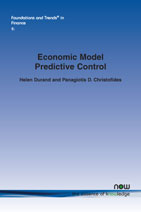Economic Model Predictive Control: Handling Valve Actuator Dynamics and Process Equipment Considerations
Helen Durand, Department of Chemical and Biomolecular Engineering, University of California, USA, helenelle@ucla.edu , Panagiotis D. Christofides, Department of Electrical Engineering, University of California, USA, pdc@seas.ucla.eduAbstract
Chemical process equipment (e.g., sensors, valves, pumps, and vessels) can impact the dynamics, profitability, and safety of plant operation. While continuous chemical processes are typically operated at steady-state, a new control strategy in the literature termed economic model predictive control (EMPC) moves process operation away from the steady-state paradigm toward a potentially time-varying operating strategy to improve process profitability. The EMPC literature is replete with evidence that this new paradigm may enhance process profits when a model of the chemical process provides a sufficiently accurate representation of the process dynamics. Recent work in the EMPC literature has indicated that though the dynamics associated with equipment are often neglected when modeling a chemical process, they can significantly impact the effectiveness of an EMPC (and the potentially time-varying operating policies dictated by an EMPC may impact equipment in ways that have not been previously observed under steady-state operating policies); therefore, equipment dynamics must be accounted for within the design of an EMPC. This monograph analyzes the work that has accounted for valve behavior in EMPC to date to develop insights into the manner in which equipment behavior should impact the design process for EMPC and to provide a perspective on a number of open research topics in this direction.
Economic Model Predictive Control: Handling Valve Actuator Dynamics and Process Equipment Considerations
Economic Model Predictive Control (EMPC) is a control strategy that moves process operation away from the steady-state paradigm toward a potentially time-varying operating strategy to improve process profitability. The EMPC literature is replete with evidence that this new paradigm may enhance process profits when a model of the chemical process provides a sufficiently accurate representation of the process dynamics.
Systems using EMPC often neglect the dynamics associated with equipment and are often neglected when modeling a chemical process. Recent studies have shown they can significantly impact the effectiveness of an EMPC system. Concentrating on valve behavior in a chemical process, this monograph develops insights into the manner in which equipment behavior should impact the design process for EMPC and to provide a perspective on a number of open research topics in this direction.
Written in tutorial style, this monograph provides the reader with a full literature review of the topic and demonstrates how these techniques can be adopted in a practical system.
